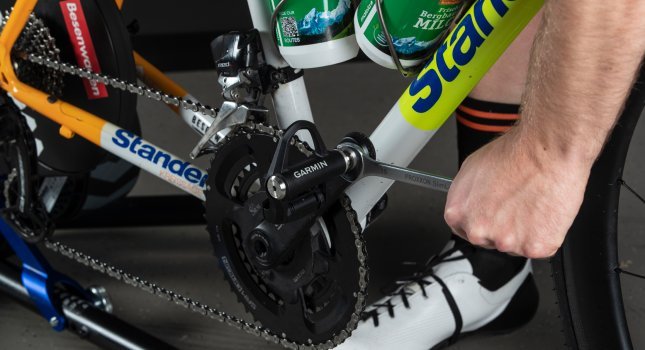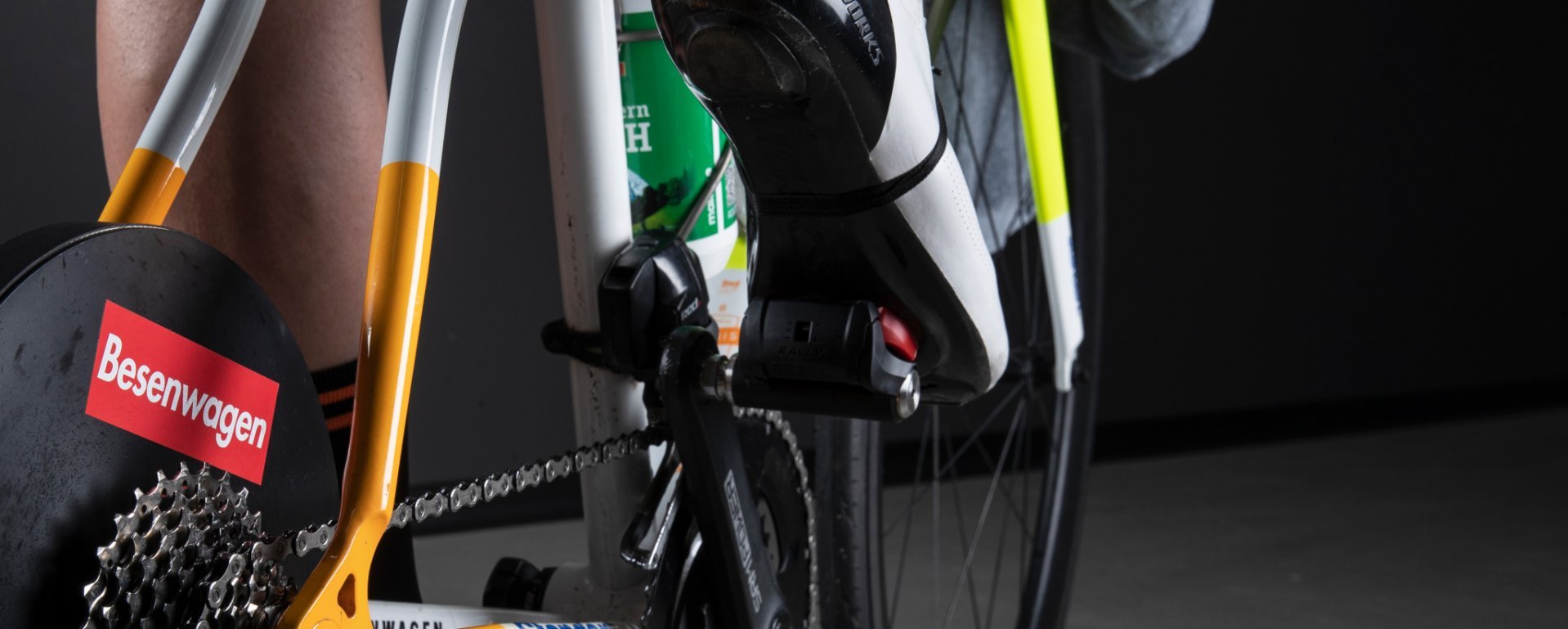
Shimano, Campagnolo or SRAM? Shifters & Deraill...
Whether you’re a sprinter or a mountain enthusiast, a nerd for classics or a fan of light materials, our tips will guide you to the right road bike system.
Garmin launches the 4th generation of its Power Meter pedals. Rally is the name of this extremely versatile system. Jonas can give you a first look.
Power meters) are the preferred training technique among professionals – and are becoming more affordable for amateur athletes, too. Power meter pedals are especially attractive for beginners and frequent users compared to cranks and rear hubs with integrated power meters. For one thing, they are relatively inexpensive to start with or as a supplement, because they can easily be used on several kinds of bikes. The new Rally Power Meter Pedals by Garmin shine above all else with an amazing wealth of variations, which means almost everyone will be happy. Furthermore, power meter pedals make it possible to determine the exact performance of both legs and thus target your training goals exactly, not just for rehab scenarios or athletes in different sports.
I was able to test the new Garmin Rally pedals for two weeks, which equated to about 20 hours of riding. Since the harsh onset of winter came right around this time, I mainly rode with them on my Standert "circular saw" on the trainer and only for one ride outside. I rode the Wahoo routes Watopia, Innsbruck, Richmond, Paris and Yorkshire. The advantage of indoor training was that I could directly compare the data from the Garmin pedals with that of my SRM Origin cranks and my Wahoo Kickr V5. The accuracy was astonishing: in the end result, the values deviated quite consistently by three watt – which is completely plausible, since the chainring spider, at which SRM measures, is located one crank length further away from the foot. I personally prefer the meter on the Spider – for me, pedals with a power meter would be too exposed in the long run. Also, two-sided measurement is not so relevant for me. However, I very well understand that factors like quick installation, easy pedal exchange and inexpensive, entry-level price point impress many cyclists. I also had the variant for the Look Keo clipless system for testing, and must say that I remain a clear fan of Shimano SPD-SL. The plates are more durable, the contact patch is larger and I like some float in the pedal. However, Garmin has addressed that too – more on that later.
The packaging of the Rally is secure, sleek and sturdy. The pedals retain Garmin’s typical high-quality and are well-made. The bearings are optimally adjusted: a little on the heavier side, which prevents them from twisting, and gives the impression of having solid seals. The meter is not visible from the outside, and does not add noticeably to the overall height. You can hardly visually distinguish these pedals from pedals without a power meter. For assembly, you need a 15 mm open-end wrench; the usual 8 mm hex tool does not work here, because the meter is located in the axle. The Garmin pedals are fun even during setup: no alignment is required. Mount, connect, calibrate and off you go. The Rally is equipped with Bluetooth and ANT+, with the Garmin computer it was also correspondingly easy. Even with my Leomo bike computer and my laptop, the connection remained smooth.

Clipping in and out of the pedal was completely unremarkable. It was a bit too smooth for me at first, but the spring rate can be easily adjusted at any time. Due to the somewhat tight bearings, the pedal does not rotate away, which makes it easier to clip in. Riding was uneventful in the best sense: the pedals work solidly, just as you'd expect from Garmin's fourth-generation power meter pedals. Continuous improvement is a good thing!
When choosing a power meter, the first question that always comes up is: rechargeable or disposable battery? Rechargeables have the advantage that they are firmly installed or even fully integrated, which make them completely inaccessible to water and dirt. The disadvantage: charging or changing on the road is difficult or even impossible, and a defect usually means you will have to toss the whole thing and maybe need a complete replacement. Disposable batteries are more user-friendly – you can just buy and change them on the go. The Rally requires two CR1/3N or four LR44/SR44 cells. Garmin specifies the battery life with up to 120 hours. However, with competing products as well as the Garmin predecessors of the Vector series, the battery cover sooner or later caused problems. The reason was usually the plastic threads, which became worn and loose. The Rally overcomes this with a metal lid and metal thread, which immediately feels quite different and should also last much longer. By the way, two sets of replacement seals are included in the scope of delivery – a good move!
Garmin has made its new pedals modular, allowing for different kinds of use that were previously unthinkable. First of all, you don't have to buy two meter pedals, as Garmin offers pairs where only one side has a meter. These sets are recognizable by the "100" in the name; pairs measuring on both sides are called "200". This means you can opt for the less expensive single-side version at the beginning, and upgrade to the second side later. Next, the pedal body can be swapped out – Garmin offers for the first time, in addition to the "Rally RK" version for the Look Keo clipless system, also versions compatible with Shimano clipless systems, namely "Rally RS" for SPD-SL (road bike) and "Rally SPD" for mountain bike shoes! The latter is especially interesting for gravel riders and cross-country bikers – the double-sided Rally SPD are the first power meter pedals with the a clipless system for the masses.
Summary
True to the motto "four wins", the Rally is an absolute top power meter that continues to build on the strengths of the pedal’s meter while reducing its weaknesses. For me, the Rally platform is a great option for entry-level power meters, and for all those who are looking for a very universal and durable system.
